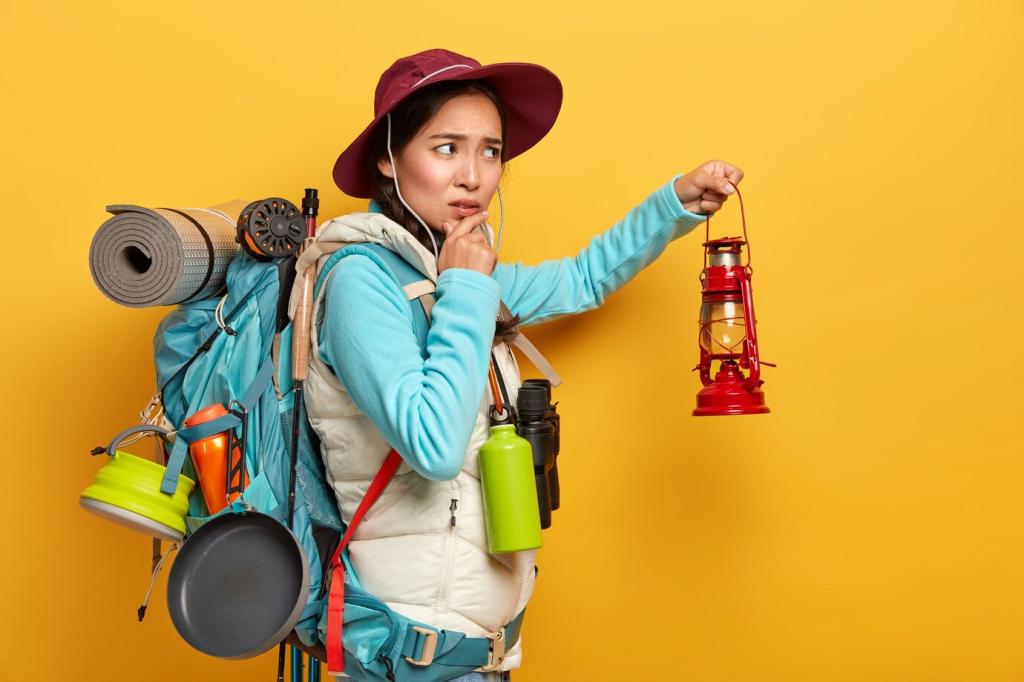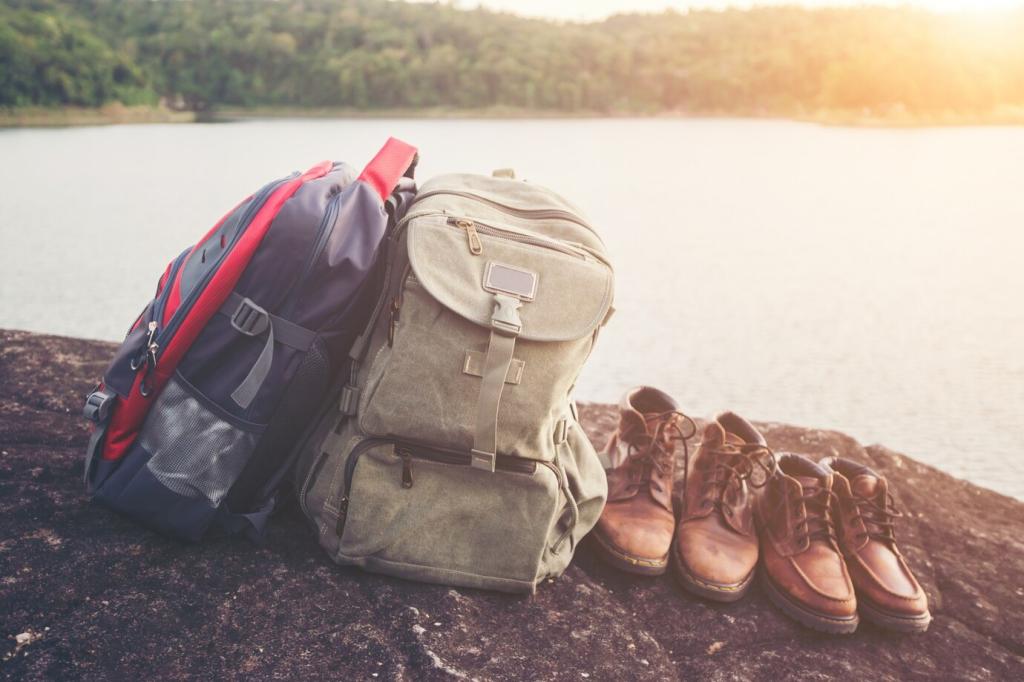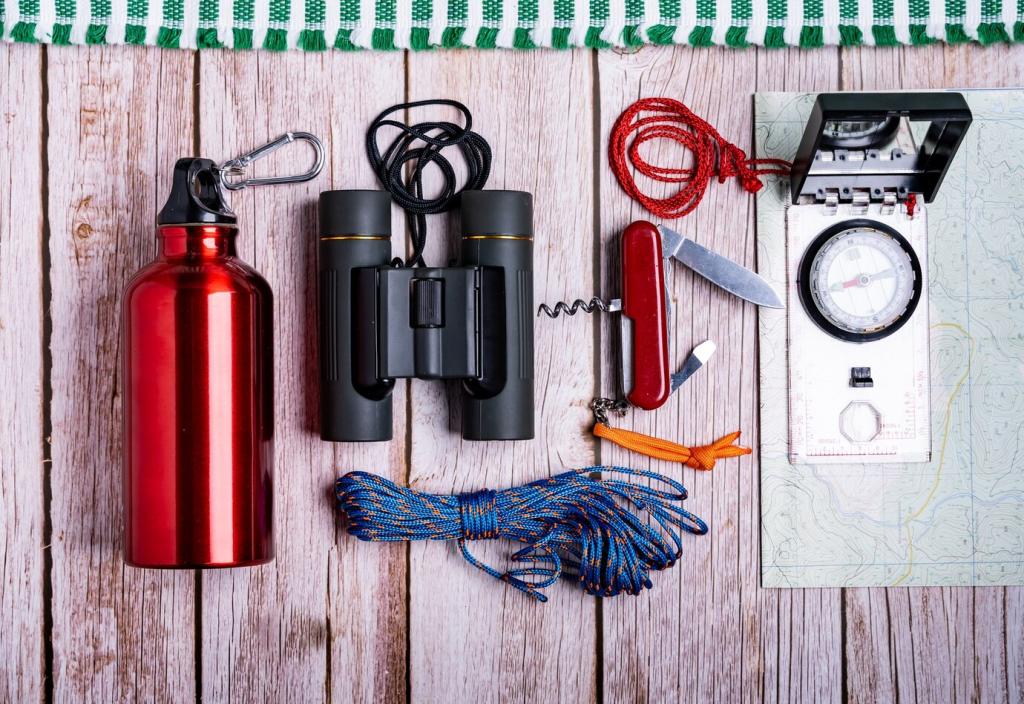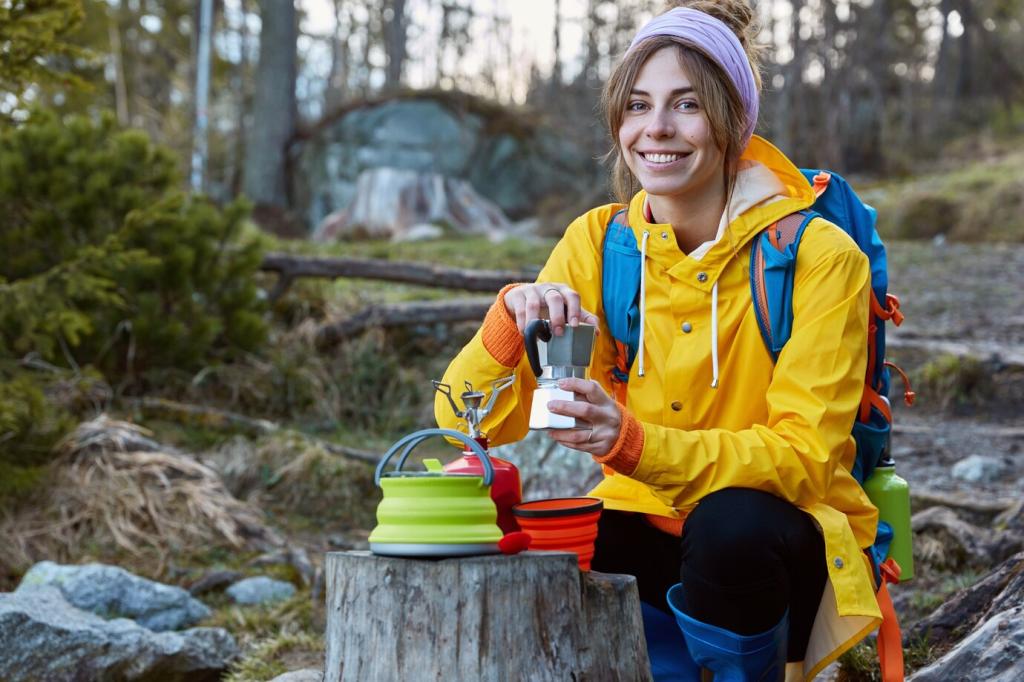Packing Essentials for Safe and Comfortable Seasonal Mountain Hikes
Chosen theme: Packing Essentials for Safe and Comfortable Seasonal Mountain Hikes. From thawing spring trails to glittering winter ridgelines, the right kit turns risk into reward and discomfort into delight. Explore this field-tested guide, share your own tips, and subscribe for fresh seasonal checklists and stories.
Mastering the Layering System, Season by Season
Base layers that manage moisture, not just temperature
Prioritize moisture transport to stay warm and chafe free. Lightweight merino or quick drying synthetics shine, while cotton sabotages comfort in every season. In summer, sun hoodies earn their keep; in winter, thicker thermals rule. Share your favorite fabric combos and why they work.
Midlayers: active insulation that actually breathes
Grid fleece, breathable synthetic puff, and a trusty vest balance warmth with ventilation during climbs. Choose pieces you can keep on while moving without stewing. Pack a cozy layer for breaks so sweat does not chill you. Tell us how you fine tune midlayers by forecast.
Shells: wind, rain, and snow protection without the sauna effect
A reliable hardshell with pit zips guards against sleet and cold rain; a softshell excels on breezy, dry days. Refresh durable water repellent to avoid wet out. Test fit with layers before trips. Which shell features have saved your season more than once?


Boots or trail runners, and the sock system that makes them work
Warm weather often favors airy trail runners, while shoulder and winter seasons reward supportive boots. Pair them with moisture wicking socks and blister prevention tape. Consider liners for high mileage days. Rotate damp socks at lunch to ward off maceration and keep morale high.

Traction add-ons: when microspikes, crampons, or snowshoes matter
Freeze thaw mornings can glaze slopes that seem harmless at noon. Microspikes bite spring ice, snowshoes float on drifts, and crampons belong on steep, firm terrain. Practice donning them quickly with gloves. What terrain triggers your decision to deploy traction instead of tiptoeing?

Gaiters and ankle guards: small gear with big comfort returns
Short gaiters block pebbles and grit on dusty switchbacks; tall, waterproof models seal out slush and snow. They also protect socks from mud, extending comfort and warmth. Add lightweight ankle guards for brushy routes. Share your go to gaiter height for shoulder season slop.

In summer, carry electrolytes and favor easy sipping bottles to encourage frequent drinks. In winter, insulate hoses to prevent freezing and stash a backup bottle upside down. Always bring treatment options, from filters to tablets. How do you balance weight with water availability on your routes?

Choose calorie dense snacks that tolerate temperature swings. Nut butters, firm cheeses, and chewy bars resist winter brittleness; gummies and chocolate hide in shade during summer. Pre cut jerky and fruit for quick bites. What pack accessible foods keep you moving when weather turns?

Warm tea or broth boosts morale in icy wind, just as a salty, chilled drink revives you after a sun baked climb. Small rituals anchor mindset when conditions wobble. Share your comfort beverage and how it changes from July to January on your home mountains.
Navigation, Lighting, and Power
Carry paper maps and a compass you know how to use, plus offline digital maps for speed. Keep phones warm in winter to protect battery life. A lightweight power bank and short cable avoid cable chaos. What mapping app layers earn your trust in shoulder seasons?
Navigation, Lighting, and Power
Choose a headlamp with reliable buttons, lock mode, and red light to protect night vision. Pack spare batteries in a small dry bag. In summer, twilight can outlast expectations, so always bring a light. Tell us the lumen range that feels right on your terrain.


First Aid, Repair, and Emergency Shelter

Season-smart first aid: from blisters to hypothermia and heat illness
Include blister care, elastic wraps, tape, pain relief, and antihistamines. In winter, add hand warmers and a hypothermia card; in summer, pack sunburn care and oral rehydration salts. Training matters as much as gear. What course or resource most improved your trail medical confidence?

Repair kits that keep small failures from ending the day
A meter of tape, zip ties, a needle and thread, spare strap, and a couple screws can fix many surprises. Add gear specific bits like a hydration bite valve or pole tip. Which tiny repair saved your favorite pack or jacket from early retirement?

Bivy, tarp, and space blanket: the emergency bed you hope never to use
Carry a compact bivy sack, heat reflecting blanket, and minimal cordage. Store them high and accessible, not buried under lunch. Practice pitching a tarp in wind. Share your experience adding just enough shelter to feel safe without dragging your pace or pack weight down.
Packing Strategy, Weight Distribution, and Access
Choosing pack volume across seasons, and what goes where
Summer daypacks around twenty liters often suffice, while shoulder and winter kits push capacity higher with insulation and safety gear. Place heavy items close to your back, centered. Keep rain layers accessible. What volume feels like the sweet spot for your typical mountain days?
Waterproofing and organization that survives storms and spills
Line your pack with a trash compactor bag or use dry sacks. Color code items so you can grab them fast. Stash a tiny towel and spare zip bags. How do you protect electronics when hail storms or creek crossings arrive uninvited and inconvenient?
Group gear planning and splitting the load fairly
Share stoves, shelter pieces, and repair kits to avoid duplication. Assign roles before departure and review at trailhead. Balance weight according to fitness and conditions. Tell us your system for dividing communal gear when the forecast straddles seasons and everyone wants comfort plus speed.
Weather Windows, Avalanche Awareness, and Seasonal Risk
Spring slush, rotten snow, and afternoon postholes
Start early to take advantage of firm morning snow, then switch to traction as sun softens surfaces. Gaiters keep slush out and spirits up. Watch for snow bridges near creeks. What spring rule of thumb has saved your shins and schedule repeatedly?
Summer thunderstorms, lightning protocols, and UV protection
Pack sunscreen, brimmed hat, and a light sun shirt. Set turnaround times to beat afternoon storms above treeline. If thunder arrives, descend and avoid isolated high points. Share the weather cues that make you switch from pushing on to pivoting down with confidence.
Autumn frost and early winter conditions without full winter gear
Carry microspikes, a warmer midlayer, and a hot drink even on sunny fall days. Expect early darkness and slick leaves hiding rocks. A light beanie and gloves transform comfort. What shoulder season add ons live in your pack until the snowpack finally settles in?
